Recent Articles
Popular Makes
Body Types
2015 Honda Civic Si Coupe Review and Quick Spin
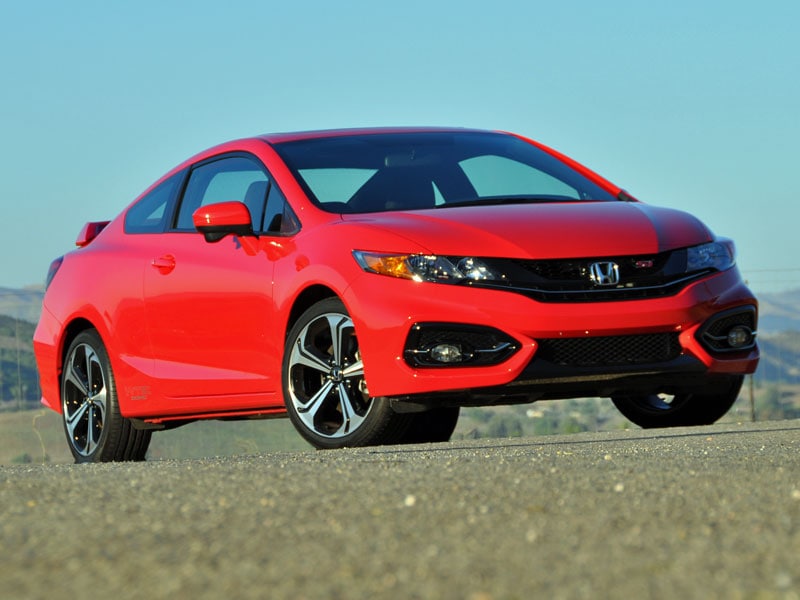
2015 Honda Civic Si Coupe Rallye Red Front Quarter Right ・ Photo by Christian Wardlaw
Sniff. I miss the Honda S2000, my melancholy deepened by the fact that this 2015 Civic Si Coupe is about as close as it gets to a modern Honda sports car. Don’t get me wrong. The latest in the lengthy lineage of Si-badged Civics is as fun to drive as ever, but it’s no S2000. Especially in the styling department.
Last year, Honda reworked the Civic Si Coupe’s design details, redesigning the car forward of the windshield, adding a set of appealing 18-inch aluminum wheels, tweaking the rear styling, and adding a wing spoiler that now makes it a little bit harder to spot the highway patrol in your rearview mirror. The end result is a definitively sportier looking Civic, but is it likely to become an iconic design like the S2000? Nope.
The interior isn’t as elemental as the S2000, either, dressed up with aluminum-esque, carbon fiber-ish, and sparkly black metallic bits and pieces of trim combined with black cloth seats with bright red inserts. The end result is more appealing than my description might sound, especially because the materials are of impressive quality, but the latest Civic Si’s in-car technology certainly causes a level of distraction never present in the S2000.
If it sounds like I’m unimpressed with the Civic Si, that’s not the case. For what this car is designed to do, it meets expectations for a modern pocket rocket. Key competitors, however, offer greater practicality and thrills, so while Honda just wrapped up an intensive reworking of the Civic Si last year, there remains work to be done.
About Our Test Car
Following successive years of improvement, Honda carries the Civic Si forward without changes for the 2015 model year. You can choose between a 2-door coupe ($23,680) and a 4-door sedan ($23,880), the latter supplying lots of added practicality if you’re planning to carry passengers and/or cargo on a regular basis.
Regardless of the body style, when you buy a Honda Civic Si, you’ve got three decisions to make. First, you’ve gotta choose a color, like the Rallye Red paint seen in the photos. Second, you’ve gotta decide whether or not you’d like a set of summer performance tires ($200), which were installed on my test car. Third, you’ve gotta decide if a navigation system with real-time traffic, a multi-angle reversing camera, HD Radio, and satellite radio is worth an extra $1,500.
One decision you won’t need to make is whether or not to get an automatic transmission. Honda doesn’t offer one for this car, so if you can’t operate a clutch, you’re not getting a Civic Si.

Photo by Christian Wardlaw
Comfort and Quality
Packing a family of four into any vehicle is a great way to measure its practicality, so that’s what I did, taking my wife, my kids, and the Civic Si Coupe for a day trip to California’s south-central coast.
The driver’s seat proved exceptionally comfortable, offering substantial and useful bolstering without confining the driver, as well as a manual height adjuster that makes it easy to find a proper driving position. That latter feature is lacking from the front passenger’s seat, but this chair easily tilts and slides forward for loading children.
Granted, if you’re going to carry kids on a regular basis, you’re going to want the Civic Si Sedan.
Once we got our offspring strapped in, the only complaints from my first grader and pre-schooler were that they couldn’t see out. Later, after removing their child safety seats, I tried getting into the Civic Si’s rear quarters. They’re snug, with limited headroom and legroom for larger adults. The bottom cushion sits high, though, providing good thigh support, and that’s one reason why people over 5’8” are going to be unhappy in the Civic Si Coupe’s back seat.
The Si Coupe’s trunk measures 11.7 cu.-ft. but seems roomier than that. We easily loaded beach gear, a large camera backpack, and more, and the trunk’s lid slams shut with a solid and satisfying thunk. What it lacks is a grip on the inside of the lid to help keep fingers clean when closing it.

Photo by Christian Wardlaw
Features and Controls
It takes awhile to acclimate to the Civic’s control layout. The 2-tier dashboard combines digital, analog, and graphic information displays in four different zones, and sometimes you look around wondering where you might find the information you’re seeking. Except for current speed. There’s no missing the giant digital speedometer.
Honda’s Display Audio system is designed to work like a 7-inch tablet computer with swipe, tap, and pinch capability, but the Civic Si’s taut suspension tuning makes it somewhat difficult to stab the right virtual buttons on the first try. The car’s owner can customize the screen graphics, and this infotainment system includes next-generation HondaLink cloud-based services.
HondaLink includes an Aha app for your smartphone, which provides access to Internet radio, news feeds, social media networks, podcasts, audio books, location-based services, and more when your device is paired to the system. Additionally, the system provides Bluetooth music streaming, Siri Eyes Free mode, local search capability, maintenance minder alerts, and a variety of additional apps including a Honda-developed navigation app.
The Civic Si also includes LaneWatch technology, which uses a camera to display what’s along the right side of the car on the touchscreen audio system. Neither my wife nor I find the overly complicated LaneWatch system useful. In fact, we find it distracting because it creates one more region to reference while changing lanes. We also find LaneWatch somewhat redundant because the Civic’s giant side mirrors can be positioned to nearly eliminate blind spots. Plus, LaneWatch only works on the right side of the car.
Having shared the driving on our family road trip, we both decided that we prefer a traditional blind spot information system with audible and visual alerts, the latter located on or near the side mirrors.
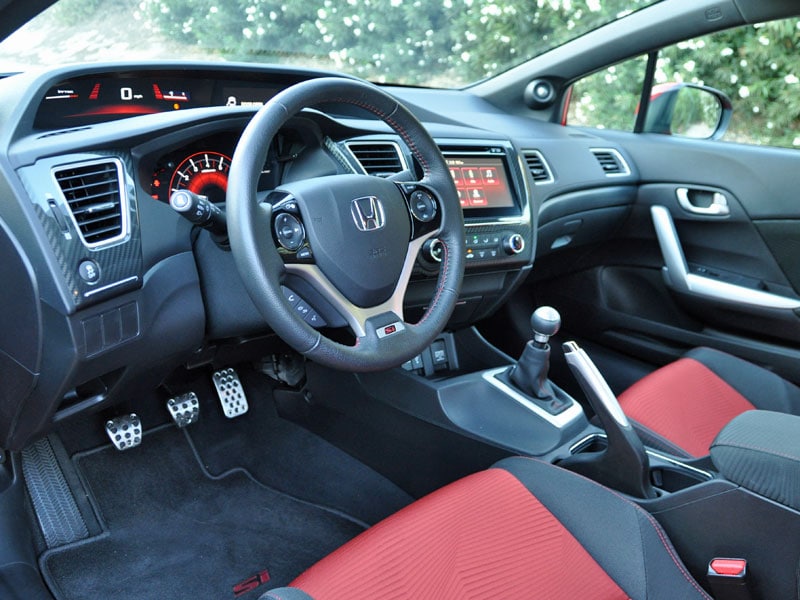
Photo by Christian Wardlaw
Safety Matters
In addition to LaneWatch, every Civic Si is equipped with an expanded-view driver’s side mirror that helps to spot traffic adjacent to the left side of the car, a standard reversing camera, and text messaging support. That’s about as sophisticated as things get, though, unless you count the upgraded multi-angle reversing camera that’s included in the optional navigation system.
When it comes to crash-test performance, the Si Coupe gets an overall rating of 4 stars from the NHTSA, while the Si Sedan nets a 5-star rating. Why’s that? The Si Coupe’s front passenger side-impact protection rating is 4 stars, compared to 5 stars for the Si Sedan. Both versions are named “Top Safety Pick” models by the Insurance Institute for Highway Safety (IIHS).
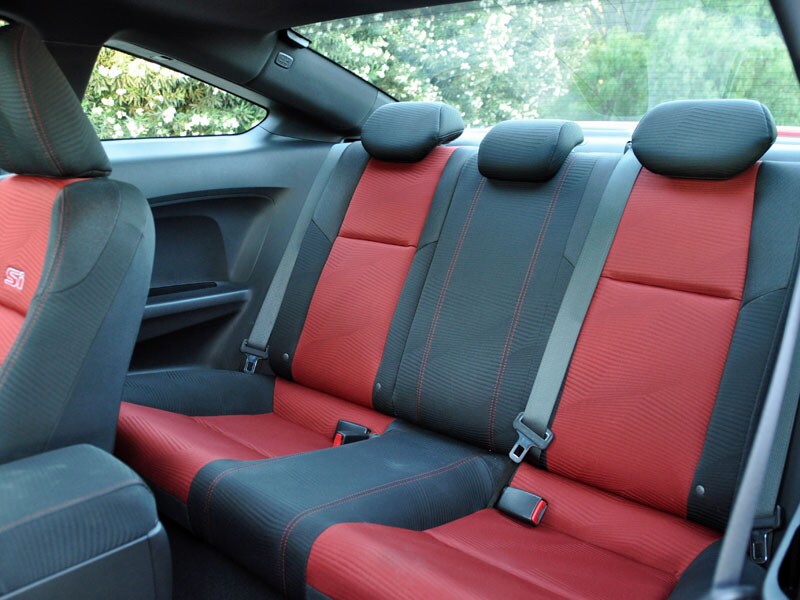
Photo by Christian Wardlaw
What's Under the Hood
A 2.4-liter 4-cylinder engine is standard for the Civic Si, and this is the only version of the Civic that gets this particular powerplant. Naturally, it features Honda’s intelligent variable valve timing and lift electronic control, better known as i-VTEC. Typically, such Honda engines make their peak power high in the rev range, and this one’s no different.
Peak horsepower arrives at a lofty 7,000 rpm, while peak torque arrives at 4,400 rpm. Compare these figures to a primary competitor, the Volkswagen GTI. The turbocharged VeeDub’s 258 lb.-ft. of torque arrives at 1,600 rpm and is available until 4,200 rpm. That’s where 210 horsepower take over, from 4,300 rpm all the way to 6,200 rpm. The resulting drivetrain character makes the driver feel strapped into a slingshot. Honda’s Civic Si is more like sitting inside of a New Year’s Eve noisemaker.
You can, however, likely count on getting better gas mileage than the window sticker says you will. EPA-rated to get 22 mpg in the city, 31 mpg on the highway, and 25 mpg in combined driving, I averaged 27.2 on my test loop despite regularly exploring the upper reaches of the rev range. During the entire week I had the keys, the Civic Si got 30.5 mpg, mainly due to that family road trip.
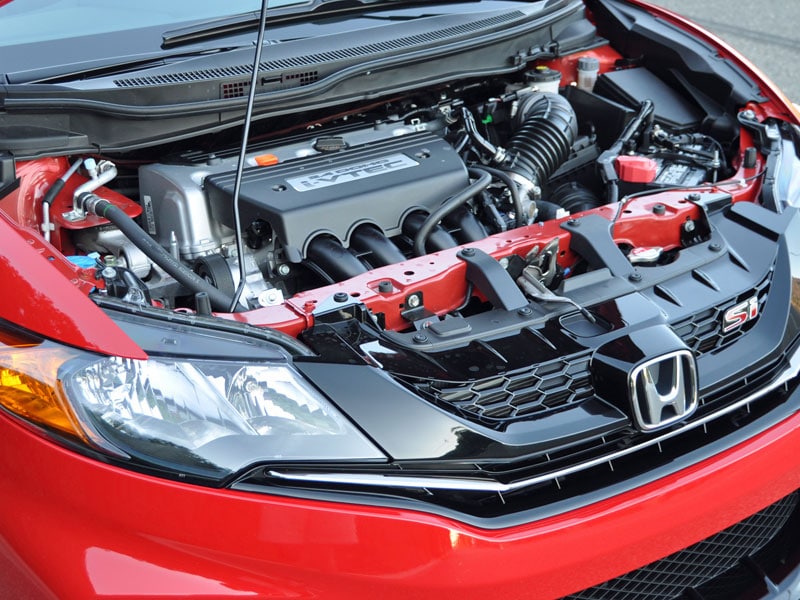
Photo by Christian Wardlaw
Driving Impressions
Push the Civic Si’s red engine start button, and it is instantly clear that this car contains a masterfully engineered engine. It revs freely and smoothly, delivering a mechanical symphony like few others and communicating pure engineering expertise.
While the power peaks are high, the torque is more accessible than in previous generations of the car. For example, you can approach a red light and, if it turns green before you’ve come to a complete stop, you can continue your journey in second gear without feeling as though someone switched off the power button. Still, accelerate through the gears with enthusiasm and the Civic Si can’t match the sensation of thrust delivered by a Volkswagen GTI.
Of course, the Civic Si’s manual gearbox makes up for the engine’s lackluster thrill levels. A genuine joy to use, the transmission boasts easy clutch take-up, a smooth and precise shifter, and effortless rev matching capability. On a hot summer day, though, you might need an oven mitt to grasp the aluminum shift knob.
Honda re-tuned the Civic Si’s suspension for 2014, adding higher rate springs, new dampers, and a stiffer rear stabilizer bar. Honestly, I’m not sure I can tell the difference, and I think there’s still some opportunity to tighten this car up in terms of compliance and roll control. However, one of my favorite things about driving the Civic Si is that it doesn’t suffer a significant degradation in ride quality in exchange for its impressive handling capabilities.
Unfortunately, my test car’s Continental ContiSportContact summer tires tended to chirp and squeal over paint stripes, drawing unnecessary attention to accelerative and cornering antics. The brakes proved outstanding, however, and the Civic Si’s electric quick-ratio steering feels perfect 95 percent of the time. Occasionally, when returning to center, the wheel feels a little bit light and disconnected, but otherwise delivers utterly natural feel and quick response through the range of motion while building appreciable heft with speed.
On my family’s multi-hour road trip, the Civic Si’s least favorable aspect was road noise, followed by engine noise. On some stretches of freeway, my wife and I definitely needed to raise our voices during normal conversation. Otherwise, the car proved unexpectedly comfortable for long-distance freeway slogging.
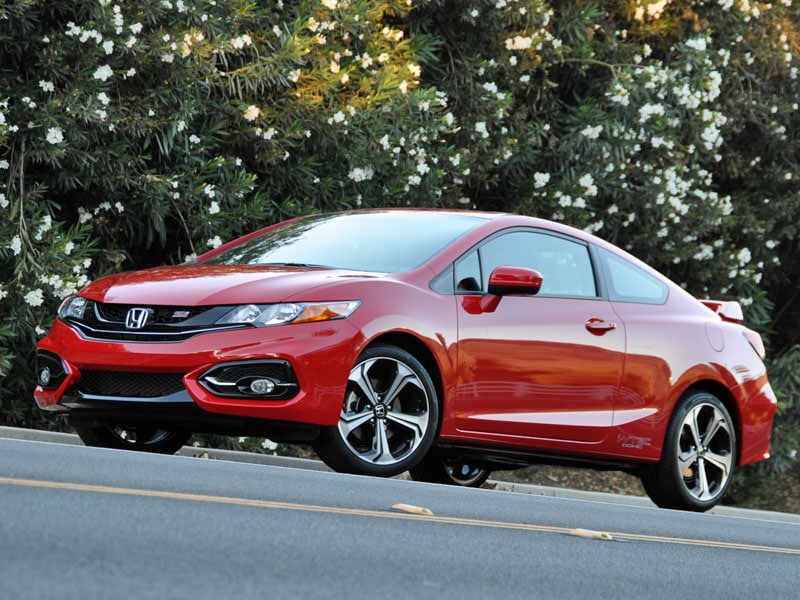
Photo by Christian Wardlaw
Final Thoughts
What the Honda Civic Si lacks is zing. You’ve gotta rev it hard to access the power, and that makes the car loud, and that draws negative attention. Plus, acceleration is linear in nature, and does not feel commensurate with the amount of racket emanating from under the hood. Honda’s commitment to its VTEC technology is long-standing, but even a modern Chevy Silverado has variable valve timing. The time has come for Honda to explore a turbocharged Civic Si.
Honda provided the 2015 Civic Si for this review
2015 Honda Civic Si photos by Christian Wardlaw
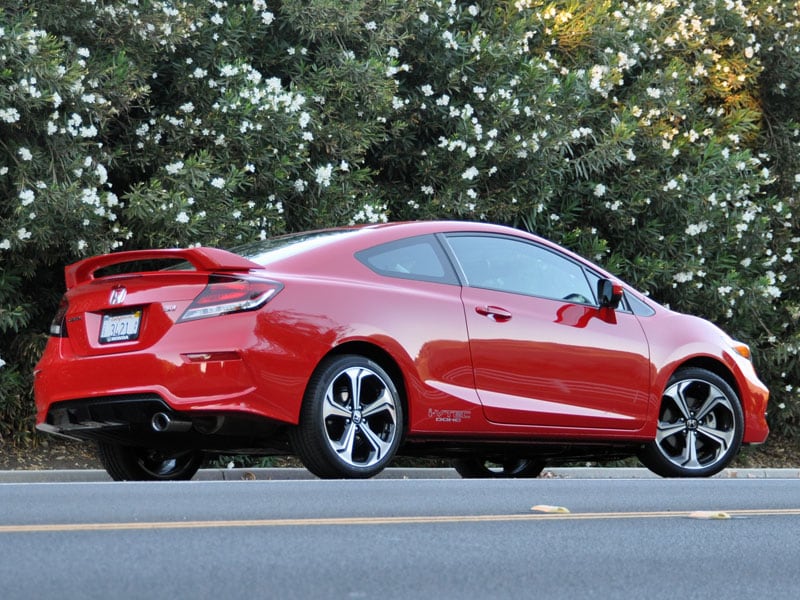
Photo by Christian Wardlaw